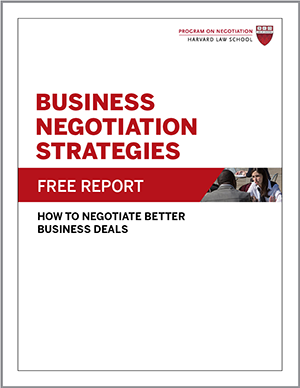
A provocative study indicates that decisions involving risk and return hinge on our basic intelligence, particularly our resistance to leaping at the intuitively right answer. Shane Frederick, an assistant professor at the Sloan School of Management, gave subjects a quick, three-question test. At MIT, less than half of the subjects answered them all correctly; at many other schools, fewer than 10% had perfect scores.
Decision Making at the Bargaining Table
Take a minute to try the test yourself:
- A bat and a ball cost $1.10 in total. The bat costs $1 more than the ball. How much does the ball cost?
- If it takes 5 machines 5 minutes to make 5 widgets, how long would it take 100 machines to make 100 widgets?
- In a lake, there is a patch of lily pads. Every day, the patch doubles in size. If it takes 48 days for the patch to cover the entire lake, how long would it take for the patch to cover half of the lake?
Distributive Negotiation and Decision-Making Negotiating Skills
Next, Frederick compared the decision-making skills of those who scored well and those who didn’t. Given a choice between receiving $3,400 today or $3,800 next month, for example, almost twice as many of the high scorers picked the latter—which implies an annual discount rate of $280—than did those who got the pretest questions wrong. Similarly, high scorers were much more likely to prefer a 15% chance of winning $1 million to getting $500 for sure.
Understanding the expected value and how the passage of time affects monetary value is essential to negotiating wise agreements. Perhaps training can enhance the cognitive bargaining skills Frederick tested, but it would be prudent for those scoring poorly on his test to seek out objective advice from others before signing on the dotted line.
Curious about how you scored? The answers are 5 cents (not 10, a common response), 5 minutes (not 20), and 47 days (not 24).
How do you think your negotiation skills rank? Share your thoughts in the comments section below.
Adapted from “Test Your Negotiation Smarts,” first published in the Negotiation newsletter, February 2007.




